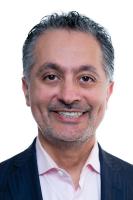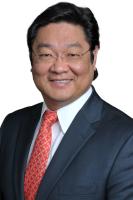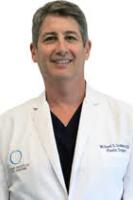Eyelids (Upper & Lower)
Overview
 If your upper eyelids sag or you have puffy bags under your lower eyelids, eyelid surgery (blepharoplasty) can provide more rested, rejuvenated, brighter eyes for an overall younger looking face. Your eyes may even look refreshingly larger after the procedure. Some patients have only upper eyelid surgery or lower eyelid surgery, while most have both at the same time.
If your upper eyelids sag or you have puffy bags under your lower eyelids, eyelid surgery (blepharoplasty) can provide more rested, rejuvenated, brighter eyes for an overall younger looking face. Your eyes may even look refreshingly larger after the procedure. Some patients have only upper eyelid surgery or lower eyelid surgery, while most have both at the same time.
Upper blepharoplasty and lower blepharoplasty are among the most popular cosmetic surgeries performed today on both men and women. Most people who have eyelid surgery are aged 35 or older, but you can have the surgery at any age if you have inherited drooping eyelids or bags under your eyes.
“Wonderful experience. Dr. Momeni is a skilled surgeon, and I am thrilled with the results of my upper eyelid lift. The staff is caring and skilled as well. It is only three weeks post-surgery, and I look great.”
Ready to get started?
 Our surgeons have many years of experience providing successful eyelid lifts for our patients. For blepharoplasty, we make sure to evaluate the muscles of your eyelids and make sure that the area is not made too tight after surgery. We take care to preserve the shape of your eyes, and we are dedicated to a natural result that will not be easily detectable.
Our surgeons have many years of experience providing successful eyelid lifts for our patients. For blepharoplasty, we make sure to evaluate the muscles of your eyelids and make sure that the area is not made too tight after surgery. We take care to preserve the shape of your eyes, and we are dedicated to a natural result that will not be easily detectable.
Sometimes, eyelid plastic surgery is a medical necessity, such as when a drooping upper eyelid impairs vision, your insurance plan may cover it. If you believe your vision is impaired by drooping upper eyelids, be sure to see your ophthalmologist first to obtain a visual field test. If the lower eyelids are sagging, ask your ophthalmologist if you have ectropion or entropion. The evaluation from your eye doctor (not just the plastic surgeon) will help determine whether your insurance carrier would consider your eyelid surgery is medically necessary.
While an eyelid lift can reduce some lines around the eyes, it does not lift the eyebrows or correct forehead creases. For those conditions, a brow lift, also called a forehead lift, is necessary. For the lower part of the face, a face lift and neck lift are necessary to tighten the area and reduce lines and wrinkles. These procedures can often be performed concurrently with eyelid surgery for a full facial rejuvenation.
Other procedures done during a full facial rejuvenation include a chin implant, fat injections, Botox, dermal fillers, or skin resurfacing. It is less costly to combine procedures with your eyelid surgery, and they can often be done concurrently so that you have only one episode of anesthesia and one recovery period.
Your Eyelid Surgery Consultation at Summit Health
When you meet with us for your eyelid surgery consultation, we will have an honest discussion about your goals, expectations, and concerns, as well as the limits and risks of the procedures. We will review your medical history and recommend options that can best help you achieve your goals. We will give you thorough written instructions to prepare for your eyelid surgery and will answer any questions you have.
At Summit Health, the patient experience is of primary importance to us. We customize every single procedure we do so that it is tailored to what is best for you and you alone.
Eyelid Lift Procedure
Recovering from an Eyelid Lift
You can go home a few hours after your blepharoplasty. Expect to experience some swelling, bruising, and discomfort for 10 to 14 days after eyelid surgery, which you can manage with oral over-the-counter or prescription pain medication. You may also experience some tearing and irritation for a few days that could also cause slightly blurred vision.
In some cases, we are able to use dissolvable sutures for blepharoplasty. If you have sutures that do not dissolve, we will remove them 5 to 14 days after your procedure. For external incisions, we will give you ointment to apply during the healing process, and we will provide eye drops for you to use for a few days.
You should be able to return to work and normal activities about 2 weeks after your eyelid surgery. For the first few nights, you may need to sleep upright to reduce swelling. You should avoid strenuous exercise and contact sports for 3 to 4 weeks after blepharoplasty.
Some women can resume wearing eye makeup within a week, while others should wait for 2 weeks. We will monitor your progress in follow-up visits and will let you know when it is safe to wear makeup and exercise again.








